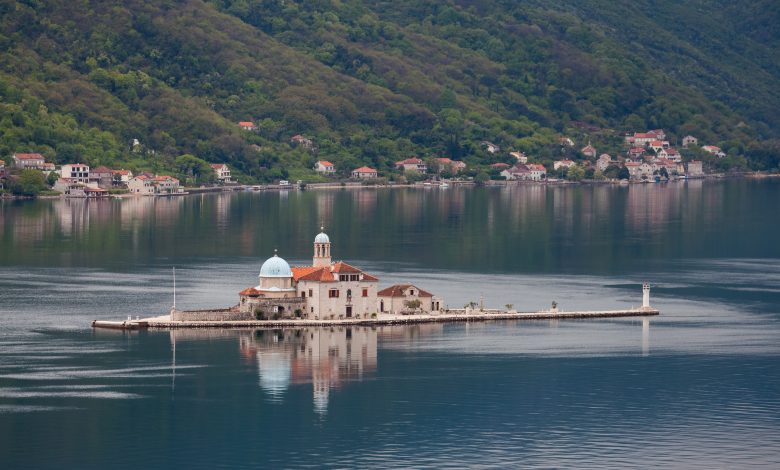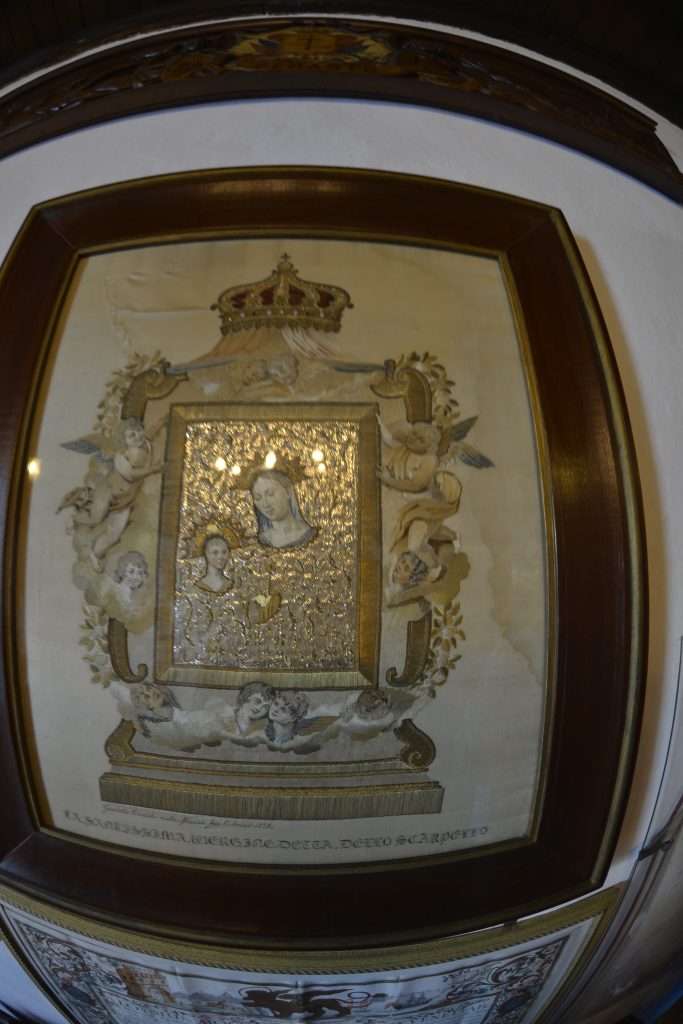LEGEND ABOUT “LADY OF ROCKS”

Tourists call it “Venice of the Adriatic Bay”, and the inhabitants of the Kotor bay are proud of one of the smallest islands with a rich history.
,,Lady of rocks” is a timeless tourist attraction on the Montenegrin coast and the church of the same name hides a special love story.
Throughout history, there have always been the incidents and accidents of sailors and their wives who have been faithfully waiting for them from months of sailing. Legends used to be based on true events, and each of these stories has something special. The one about Jacinta Kunić-Mijović is also special, she has been waiting for her beloved captain for 25 years to return home. In order to end the time and the fear of whether her sweetheart is alive and well, the young woman started tying the tapestry. From day to day, for all two and a half decades, she didn’t stop creating her little work of art, which has called “Mother of God and Christ”.
Considering that her handicraft was later given a new name – ,,Lady of rocks”, it can now be seen in the church of the same name.
Jacinta embroidered this painting according to her own sketches, which speaks of her exceptional talent and drawing skills. Made of seven different materials, the painting was made on a background of japanese silk, while she used silk, gold and silver threads, damask and pearls and her own hair for embroidery. Although this way of making tapestries has already been applied in the world, Jacinta’s work has a special value because it is one of the few preserved.

With her long and lush hair, this young woman embroidered the figures of the Mother of God and Christ, so this work is said to be a “punto paint” (stabbing).
By 1828, when she finished the painting,her hair turned white, so you can see in the hair of Mother of God a tangle of once dark and later silver-plated hair of a woman who patiently waited for a quarter of a century.
Unfortunately, there is no written evidence whether her sweetheart ever returned, but regardless of the story without a happy ending, this love was recorded in the secular annals of art as an occasion to create a small masterpiece that is the pride of Perast.
The fact that all this happened a century before Konstantin Simonov, a Russian poet, told his beloved “Wait for me, I will surely come” – and a few thousand kilometers away, in the Bay of Kotor, gives additional charm to the whole legend.
Tamara Roksandić
Photographs: wikimedia commons



